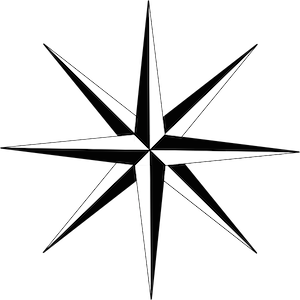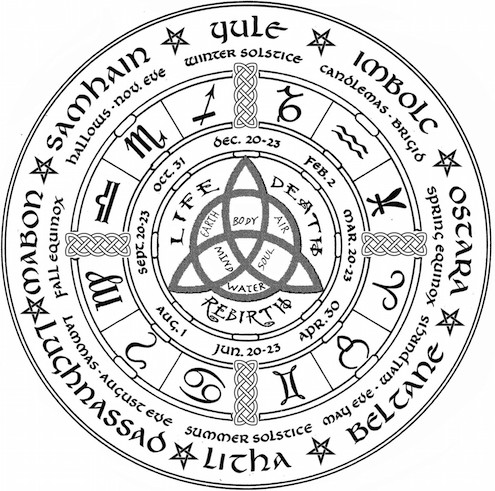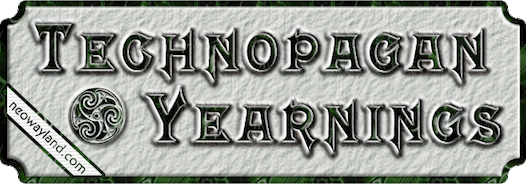Celebrate
Point of view
❝We define the labels, the labels should not define us.❞
— from the journal of NeoWayland
I don’t believe I should use this blog to teach.
I think the best teachers are the ones you see face to face. That personal relationship helps you learn faster.
But we live in an age of wonders connected digitally across the planet. Even if it’s not my place to teach, maybe sometimes I can tell beginners where to start looking for their own answers and their own path.
So I’m answering my email again, indirectly.
I’m using ideas that I work with most. My WebTree path (not a tradition) draws heavily on Celtic Reconstructionism and modern Druidry with just a smidge more Wiccanism than I am comfortable admitting.
Yule - around December 21
Imbolc - February 2
Ostera - around March 21
Beltane - April 30
Litha - around June 21
Lughnasad - August 1
Mabon - around September 21
Samhain - October 31
You’ve probably seen that list a few hundred times before. It’s obviously the neopagan sabbats. But what the list doesn’t tell you is how those dates interrelate. For that, you need an eight pointed star. I just happen to have one on file. Concentrate on the list alone and you can miss the relationships. The power isn’t in the list. The power is in how the ideas weave together.
Concentrate on the list alone and you can miss the relationships. The power isn’t in the list. The power is in how the ideas weave together.
Put Yule at the top point of the star.
Technically you don’t need the star, but it sure helps you see the connections. You can see that the winter solstice is opposite the summer solstice and that the equinoxes are opposite each other.
Yes, I’ve covered this before. Please bear with me.
You can also see that the cross quarter days are really the gateways between seasons. And you can see that the solstices and the equinoxes are really the peak moments and middle of the seasons.
Cross quarter days are High Holidays for my path. The equinoxes and solstices are Solar Festivals.
Now I could explain that in three or four pages. Or I can show you with a single picture and a few sentences.
It’s not enough to know the seasons, you have to know the connections and the relationships.
This isn’t something that is commonly taught in paganism these days. Absolutely I am not teaching it. I’m just telling you where you might begin.
I will point out that the eight-pointed star is just a start. Before the digital age, many traditions would expect you to draw something like this.

That’s a lot more complex.
Notice the relationships.
You just couldn’t draw that right at first.You’d have to start over and over again. You’d frustrate yourself because it should be easy for you. You’re passionate about your faith and you WANT to learn. You’d make many tries. Some of the hardest attempts would be with your teacher watching closely over your shoulder while you got it almost perfect. The slightest flaw means the whole picture has to be destroyed. You’d have to start over again until you could draw it on demand. By the time you were done, you could visualize the connections without the diagram.
You’d understand.
The power is not the drawing. The power is you understanding the connections.
Sure, you could get that from a list, but it would take much longer.
The tools we use shape our thought.
This isn't one of mine. But think about the work that went into this even if you don't agree with the assumptions.
Let me give you another example.
Before WWII and quick mix boxes, recipes were usually by ratios. Sure, you can memorize individual recipies that use 1 cup of that mixed with 2/3 cups of this, but it won’t teach you the relationships.
If you stood in a kitchen full of ingredients but without the pre-measured portions and the oh so precise instuctions, you’d be stuck. You wouldn’t know the relationships.
You wouldn’t know what separated a bread from a cake.
You wouldn’t know what made a soup or a sauce.
One look at a grocery store tells you that there are entire industries devoted to your ignorance and willing to sell you easy to use products so you don’t have to think about it too hard.
Someone doesn’t want you thinking about it too hard. Someone profits from you not thinking hard.
Something really simple looks enormously complicated because you’re stuck with one perspective.
Hmm, that sounds familiar. Somebody out to impress you with what they know and what they can show. Like one of Shaw’s experts.
But the way of the master means do more with less. To do that you need to understand how things interrelate. It’s not about one cup of that mixed with 2/3 cup of this, it’s about three parts of that mixed with two parts of this. The measure isn’t what you need, the ratio is.
It’s about the relationships and the connections. Think in those terms and you’ve expanded what you can do. Do more with less complication.
One last bit.
Environmentalism is about control. Control of the surroundings, control of human behavior, control of the lifeforms, everything carefully monitored and measured.
But that is not the way the world works.
Ecology is about the relationships and tradeoffs.
Guess which works better longer.
Understanding is the key. You can’t go poking around with the primal forces of the universe without understanding.
Well, you could, but it’s much safer if you understand the connections.
Change your perspective, change the world.
Change youself.
As above, so below.
Change.
Lughnasadh
So what's a Technopagan anyway?
And what do they yearn for?
And what do they yearn for?






